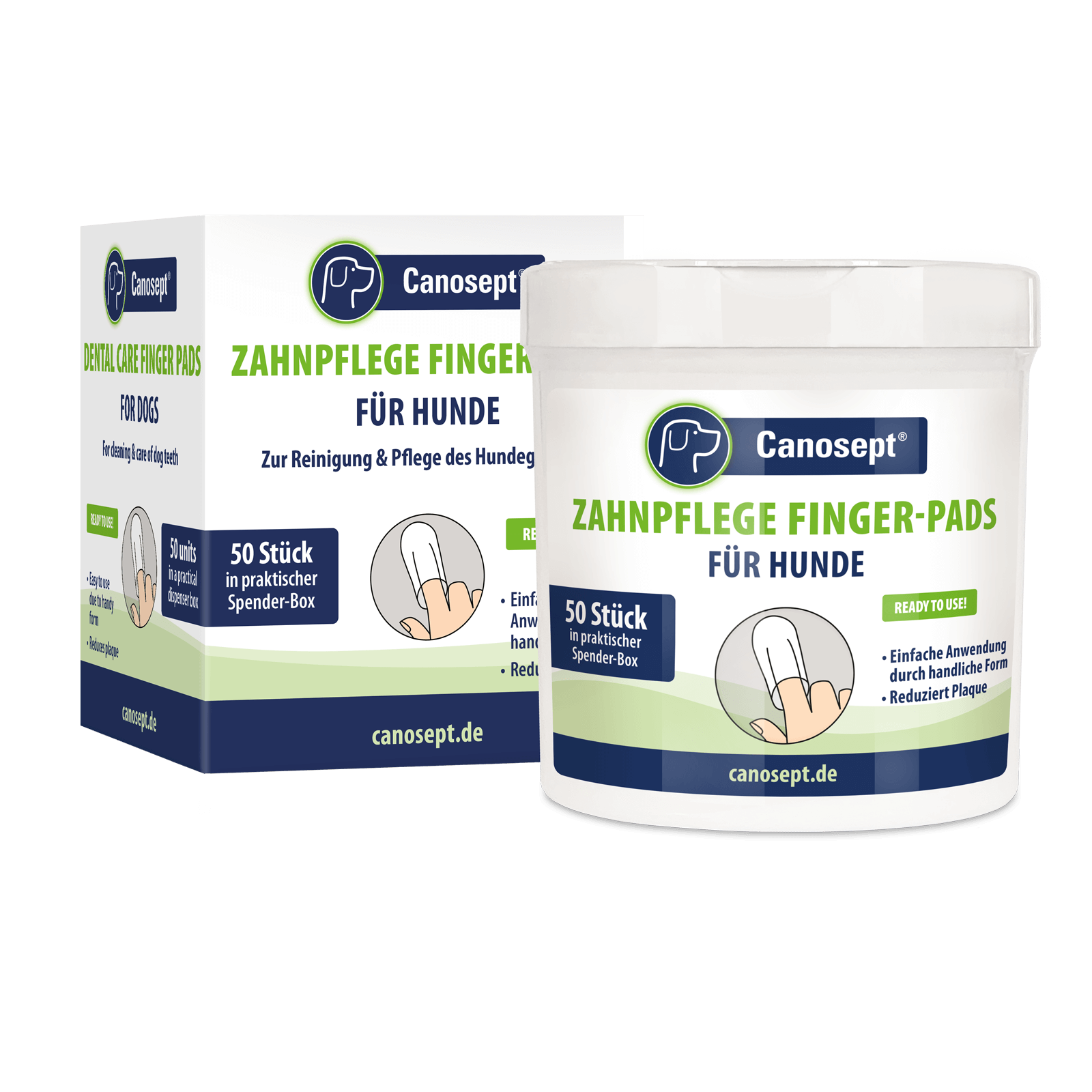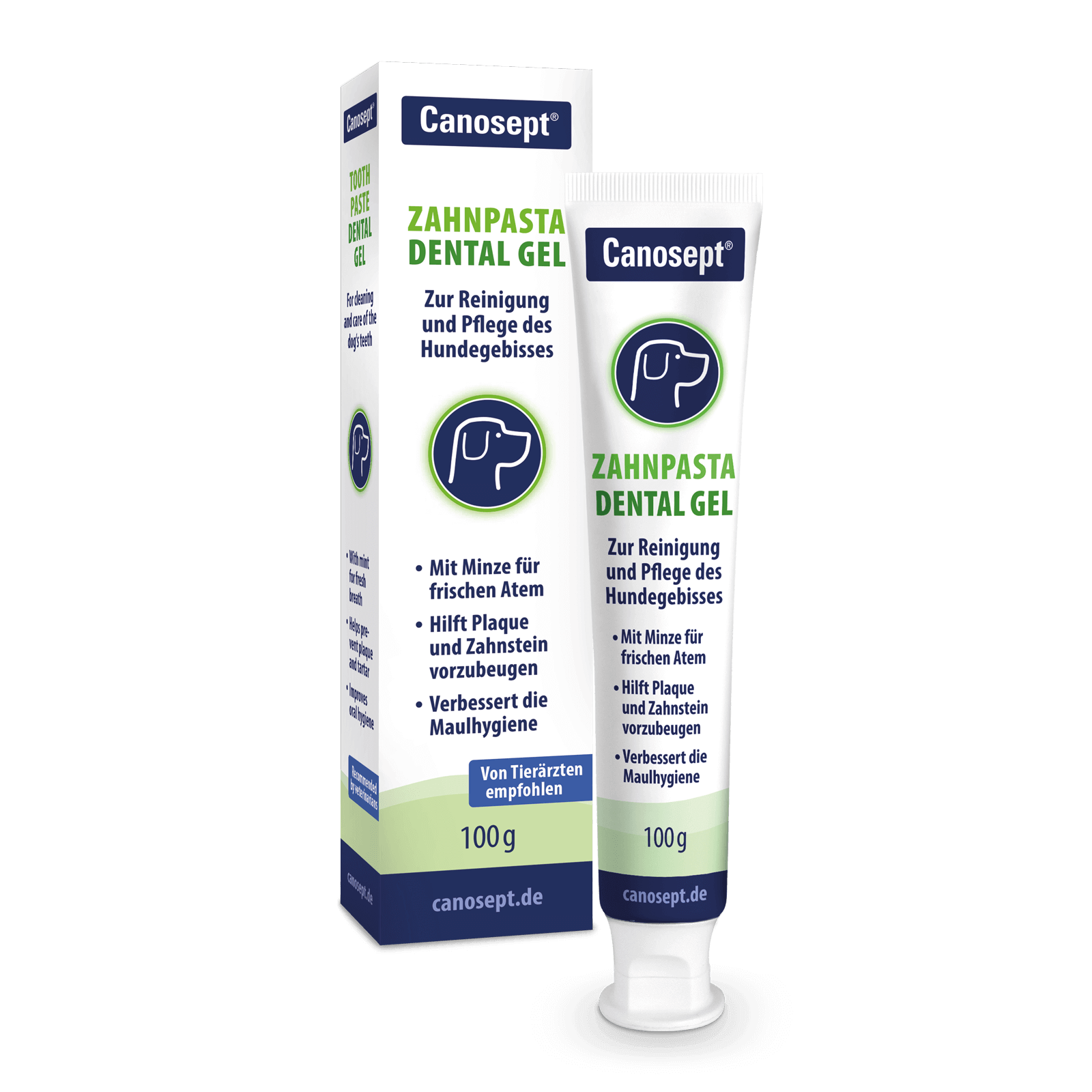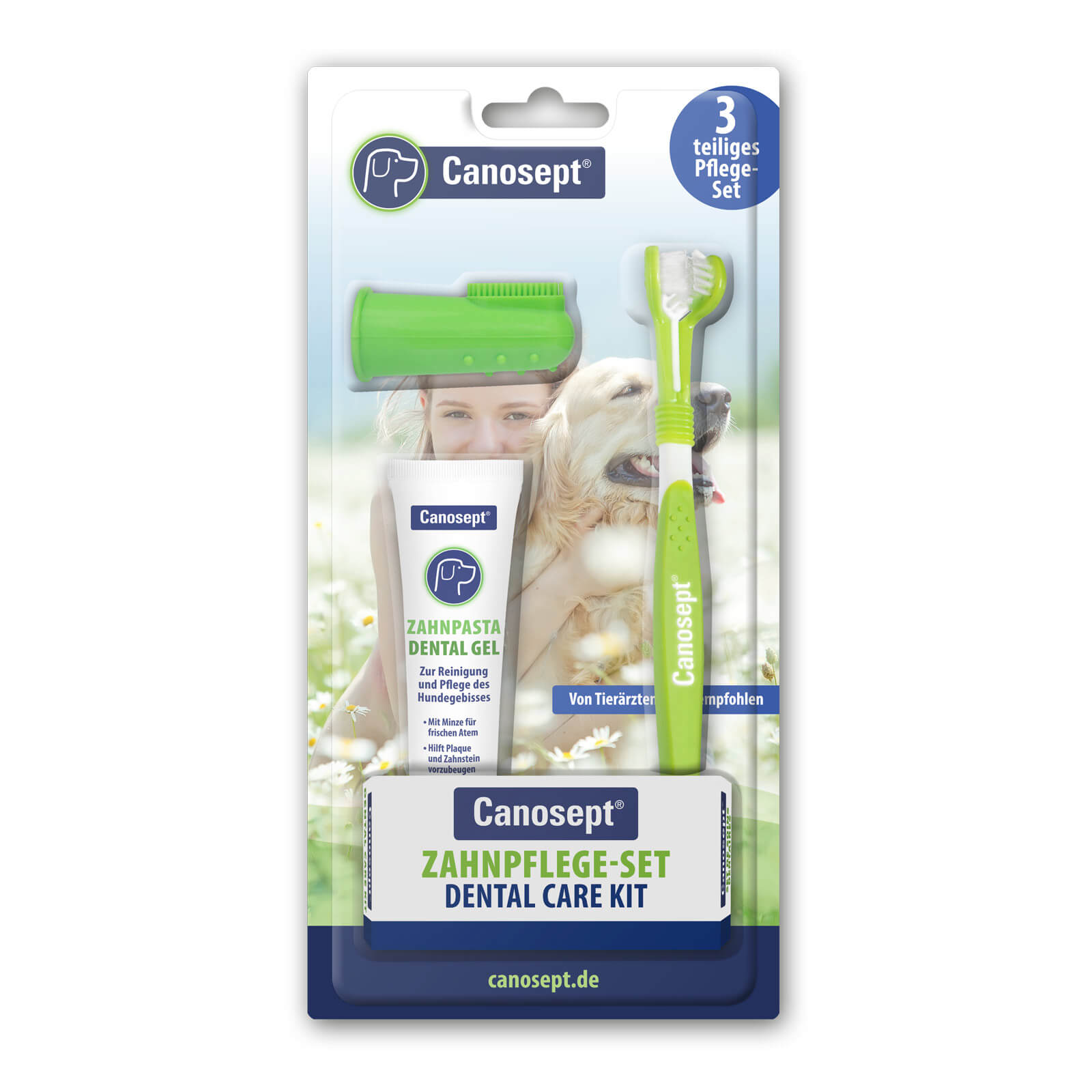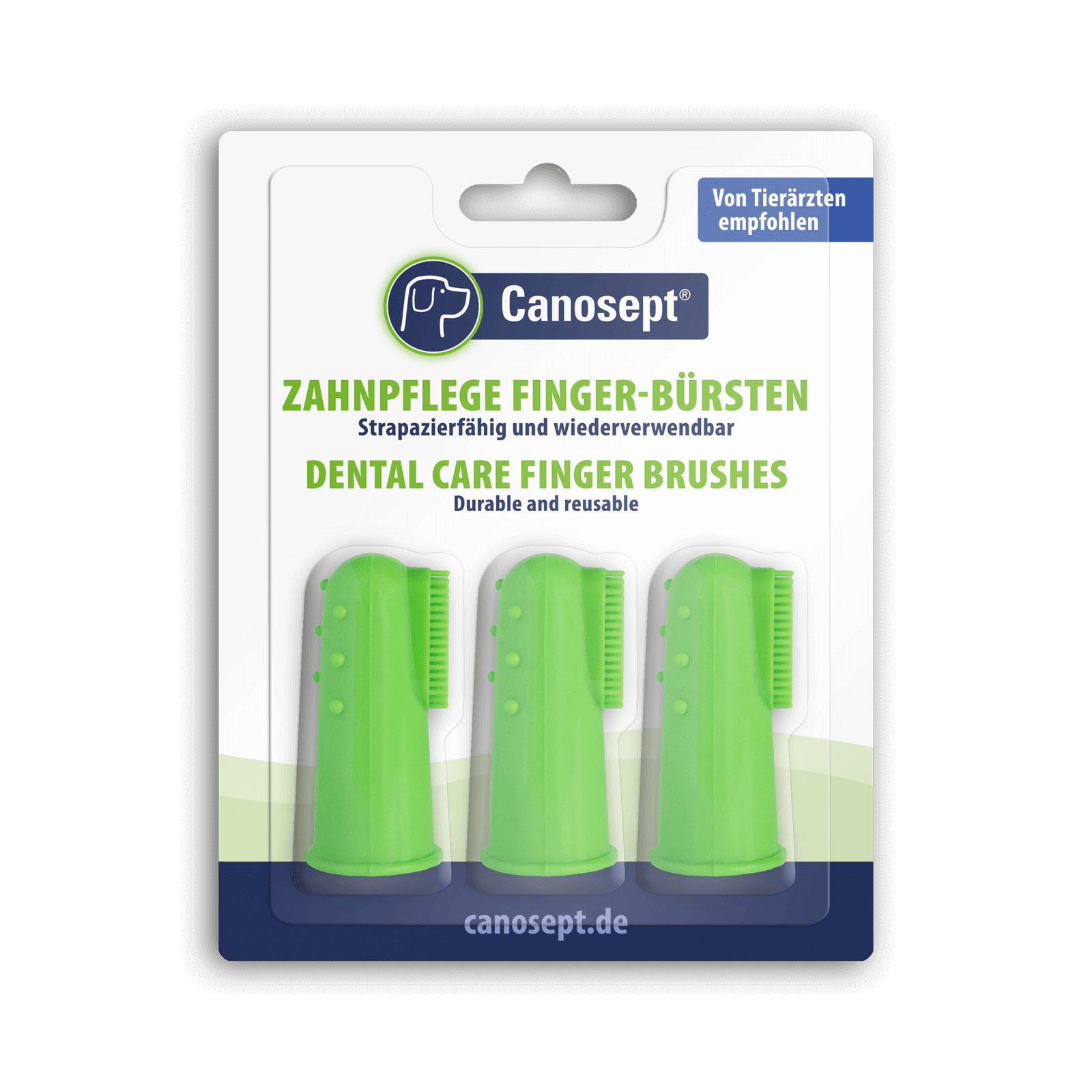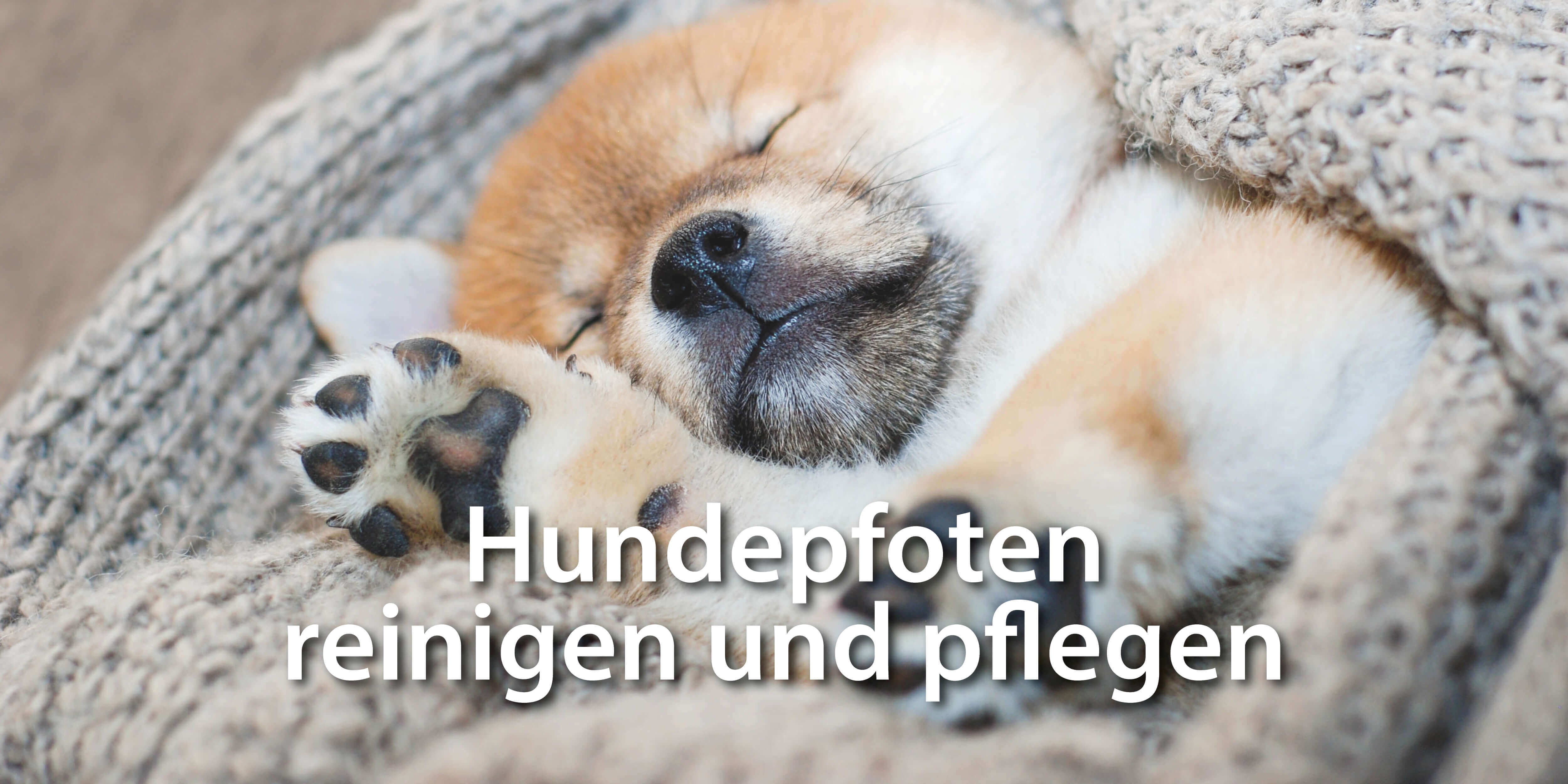- How does tartar form?
- Reasons for tartar
- Is tartar dangerous for my dog?
- Can I remove tartar myself?
- Successfully prevent tartar
From plaque to tartar
Plaque (also called dental plaque) appears as a yellowish discoloration on the teeth. Dog parents usually first find it on the back molars or the outer surfaces of the teeth. It consists of various bacteria found in the mouth and their metabolic products, as well as saliva and other waste products from the mouth.
Tartar dog – rough and yellow-brown
Tartar forms when plaque remains on the teeth for a long time without being brushed away. Minerals from saliva, such as calcium and phosphate, then deposit and harden. Tartar-coated teeth feel rough and unsmooth, and pigments in the food cause them to take on a yellow-brown discoloration.
Tartar in dogs – Why does my dog have tartar?
Tartar in dogs can be caused by several factors. However, in most cases, good dental care can prevent it.

Bad breath in dogs – regular dental care
The most common cause of tartar in dogs is a combination of food and poor dental care. Many foods contain added sugar. This leads to plaque formation, and tooth decay is a serious consequence. If the plaque isn't removed, tartar develops.

Lack of exercise
Your dog cleans its teeth with the help of saliva and its tongue. This natural tooth cleaning is an important part of oral hygiene. Saliva flow is encouraged by movement.
In dogs that don't get enough exercise, bacteria multiply more easily in the oral cavity. This leads to plaque and tartar buildup. The same thing happens in dogs that don't drink enough.

genetics
If you practice adequate dental care, pay attention to high-quality food, and your dog gets enough exercise, then your dog's tartar could be due to genetics.
Small breeds with shorter muzzles are particularly prone to tartar, despite adequate dental care. Their small muzzles and narrow interdental spaces promote the formation of tartar. Furthermore, their oral flora is different from that of larger dogs.
Tartar in dogs – Is tartar dangerous for dogs?
Tartar in dogs doesn't just cause unpleasant bad breath. For more information on bad breath in dogs, see the article "Dog Bad Breath - What You Can Do."
Tartar is also a starting point for possible secondary diseases, including:
- Discoloration of the tooth surface (between tooth and gum)
- Gum recession
- Inflammation of the gums
- Bleeding gums
- Infections of the jawbone
- Refusal of food due to toothache
- Tooth loss
- Abscesses on the root surface
- Dental problems
- and other negative effects on other organs
Tartar in dogs – How can I remove tartar from my dog myself?
In short: You should never remove tartar from your dog yourself. However, you should remove the precursor, plaque.

Prevent tartar and remove plaque
Regular dental care can help prevent tartar in your dog. For example , Canosept Toothpaste Dental Gel and the Canosept 3-Head Toothbrush
You can also use your dog's chewing instinct to prevent tartar buildup. When chewing bones, for example, your dog rubs off the plaque. You can find out which chewing bones you can use and further information in our blog article, "Dog Dental Care 101 from the Vet."

Have tartar removed only by a veterinarian
However, if tartar has already formed, it can only be removed by a veterinarian. You should refrain from treating your dog on your own.
Scratching at tartar can damage your dog's tooth enamel and cause other health problems.
In addition, tartar often leads to pockets forming on the gums. Here, too, everything needs to be thoroughly cleaned, which only your veterinarian can do.


